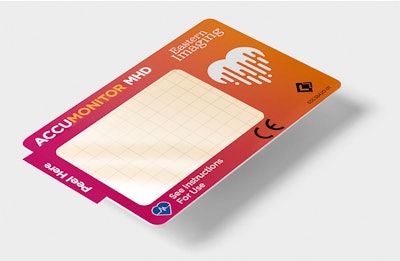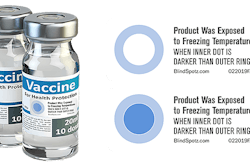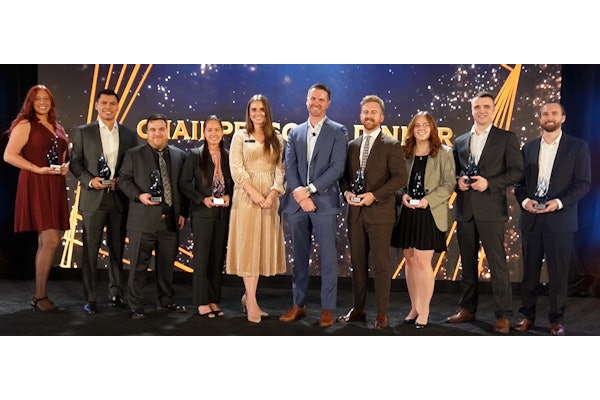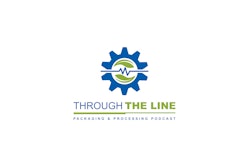A prominent medical device manufacturer has had a 20-year partnership with Tennessee-based Resource Label Group (RLG) to manufacture their equipment labels.
Recently, the device manufacturer approached RLG with a specification drawing of an identification nameplate for a cardiac mapping device to review and bring to the market.
The nameplate needed to:
- Display the device name and OEM.
- Contain a QR code, which a device operator could scan to access the product manual.
- Show the safety compliance organizations (TUV, CE) which have certified the product and its bill of materials.
- Leave a clear window, through which a separate label (printed on-demand during their device assembly process) would display device-specific identification information including the serial number and barcode.
- Simplify manual label application during the device assembly process.
The company planned to use a label comprised of a velvet-textured polyester film with a high-performance acrylic adhesive and polycoated kraft liner, both from 3M.
The planned label included a peel tab to make manually removing the label from the liner easy, and dotted guides printed on the adhesive side of the label to show assemblers where to line up the edges of the barcode label before affixing the two-label assembly to the device.
The design printing on both sides of the film. The front of the label would display all identifying information, and the back would contain the dotted guidelines. But the team realized the spec wouldn’t result in a label that matched the client’s vision.
Spec review process
“Equipment and nameplate label clients typically fall into one of two camps: they either have a finished spec and simply need it to be taken through to the finish line, or they require help engineering the spec from the ground up. This client fell into the first camp,” says Marsha Frydrychowski, RLG’s Director of Marketing Services.
Even when a client has a finished spec, RLG conducts a thorough review as a final quality check, identifying any potential problems before the print run to minimize waste, cost and lead times.
Checking for compliance requirements
Equipment labels and nameplates are functional components of the devices to which they’re adhered. Because of this, there are certain cases where OEMs will have to submit the label to regulatory bodies (e.g., UL or CSA) for approval as part of the bill of materials so RLG checks the spec for any compliance requirements.
In this case, UL and CSA compliance was not listed in the spec, meaning that it wasn’t a requirement for this particular label.
Evaluating the label construction
Looking at the spec, the construction, dimensional tolerances and tooling die requirements were clearly laid out. The window was to be left clear, and adhesive was to fully cover the back of it.
While RLG will often selectively apply adhesive, leaving the back of windows clear to enhance transparency, the note about full-coverage adhesive was not an issue because (1)the window wasn’t being used as a lens and (2) adhesive was required to adhere the barcode label behind it.
The label was to be die cut (cut through the material and liner) around the perimeter of the label except between the peel tab and the label, where the material would be kiss cut (cut through the material, but not the liner). This would allow an assembler to quickly remove the nameplate from the liner by bending the peel tab back.
A potential problem surfaced when they cross-referenced the tooling die requirements with the specified label materials.
Ensuring the compatibility of the label materials
The label materials were all compatible with the substrate (lightly textured, high-surface energy molded plastic) and the performance challenges of permanent medical device labels. But the chosen adhesive product was incompatible with the tooling requirements of the label. They specified 5 mils of adhesive on a 4.2-mil polycoated kraft liner.
Though the adhesive is well-suited for this application—it’s an acrylic product with performance attributes like slippage resistance, short-term repositionability, and excellent heat resistance—the 4.2 mil liner was too thin. Doing a kiss cut between the peel tab and the label as specified would be impossible as the die would cut through the liner completely.
(The 5-mil thickness of the adhesive was compatible with the texture of the substrate. If the surface were smooth, they could use 2 mils, but greater thickness was required for the label to fully adhere to the peaks and valleys of the textured surface.)
RLG recommended switching from the previous product to another that was exactly the same but with a thicker, 6.2-mil liner.
The company initiated an engineering change notice, initialing the redline as an approved document, averting a potentially costly problem. The change notice allowed RLG to begin production while the med device manufacturer went through the lengthy process of approving the change internally.
“On its surface, the job of an equipment label converter is to manufacture and deliver labels exactly to spec. But the reality is that we must first ensure that the spec perfectly matches the client’s vision for the label, including careful spec review and making course-correcting recommendations,” explains Frydrychowski.






















